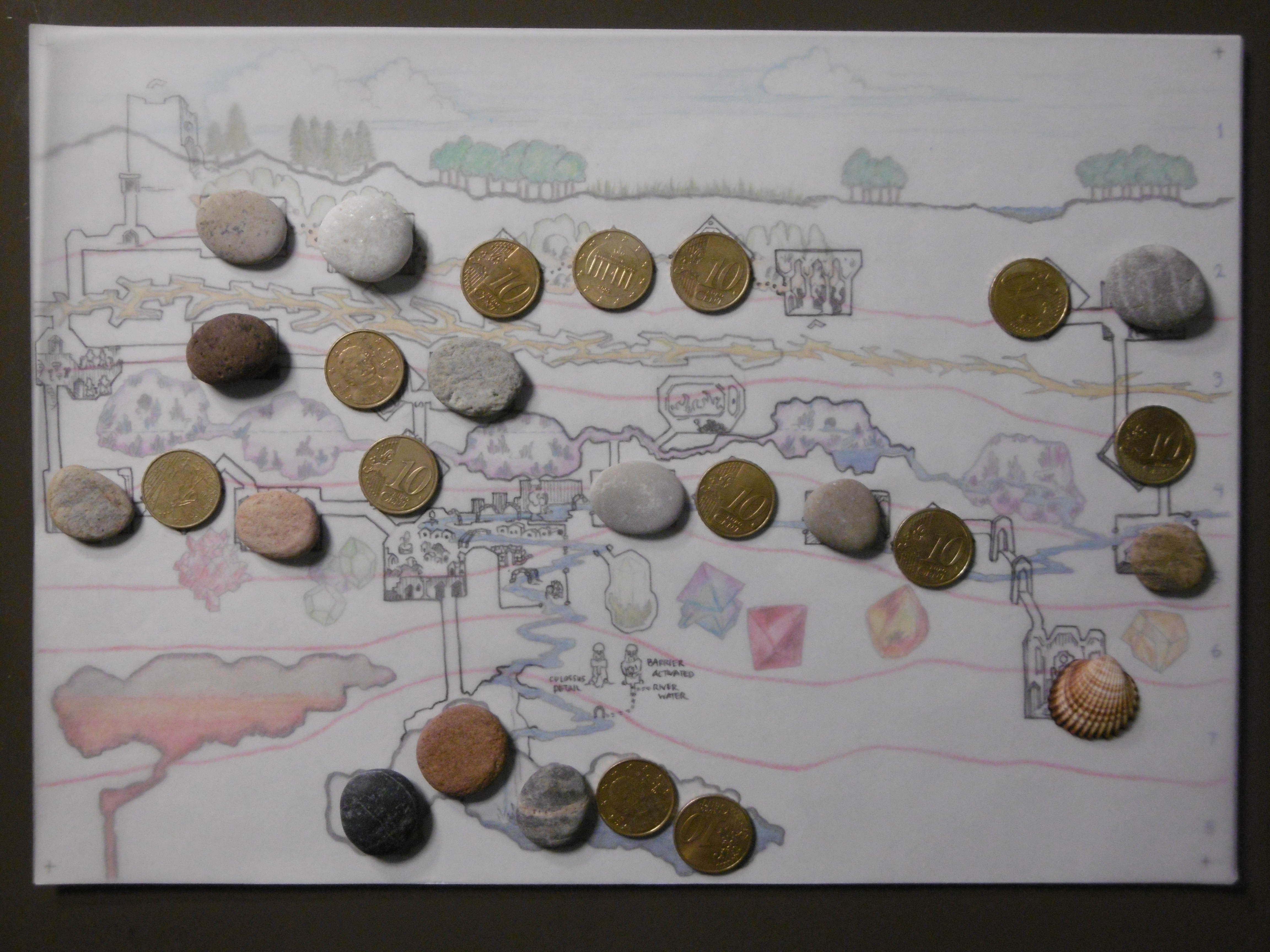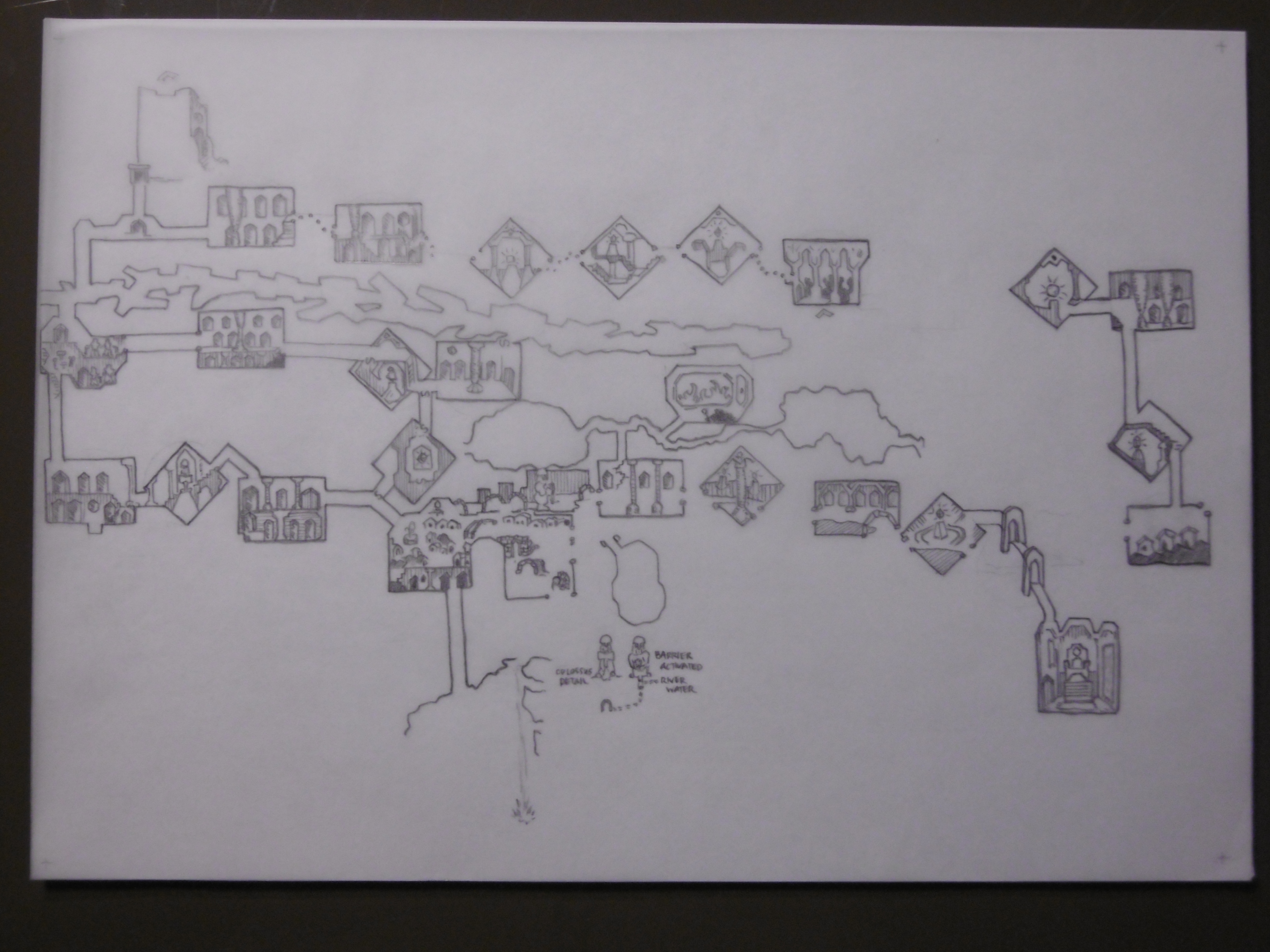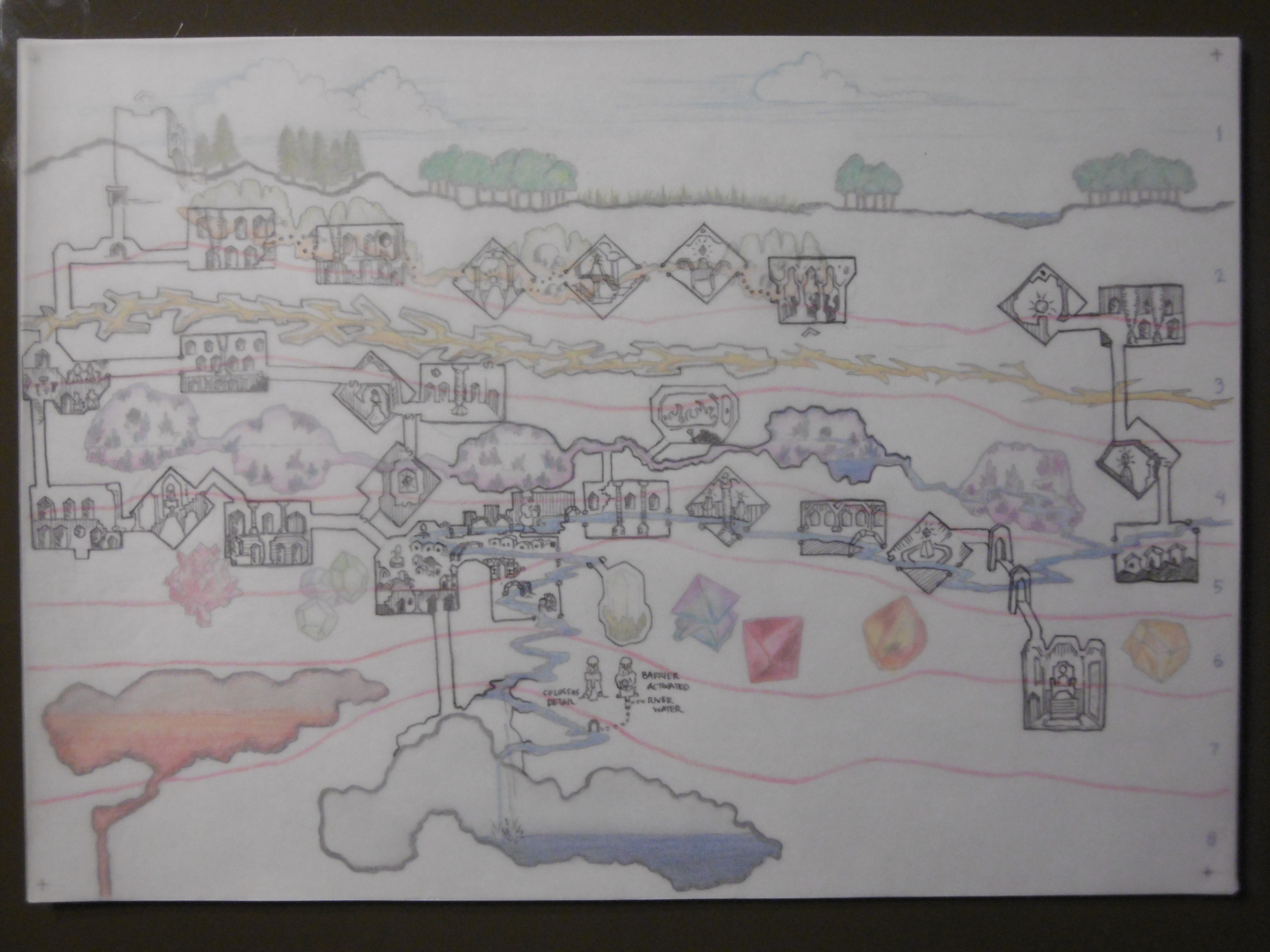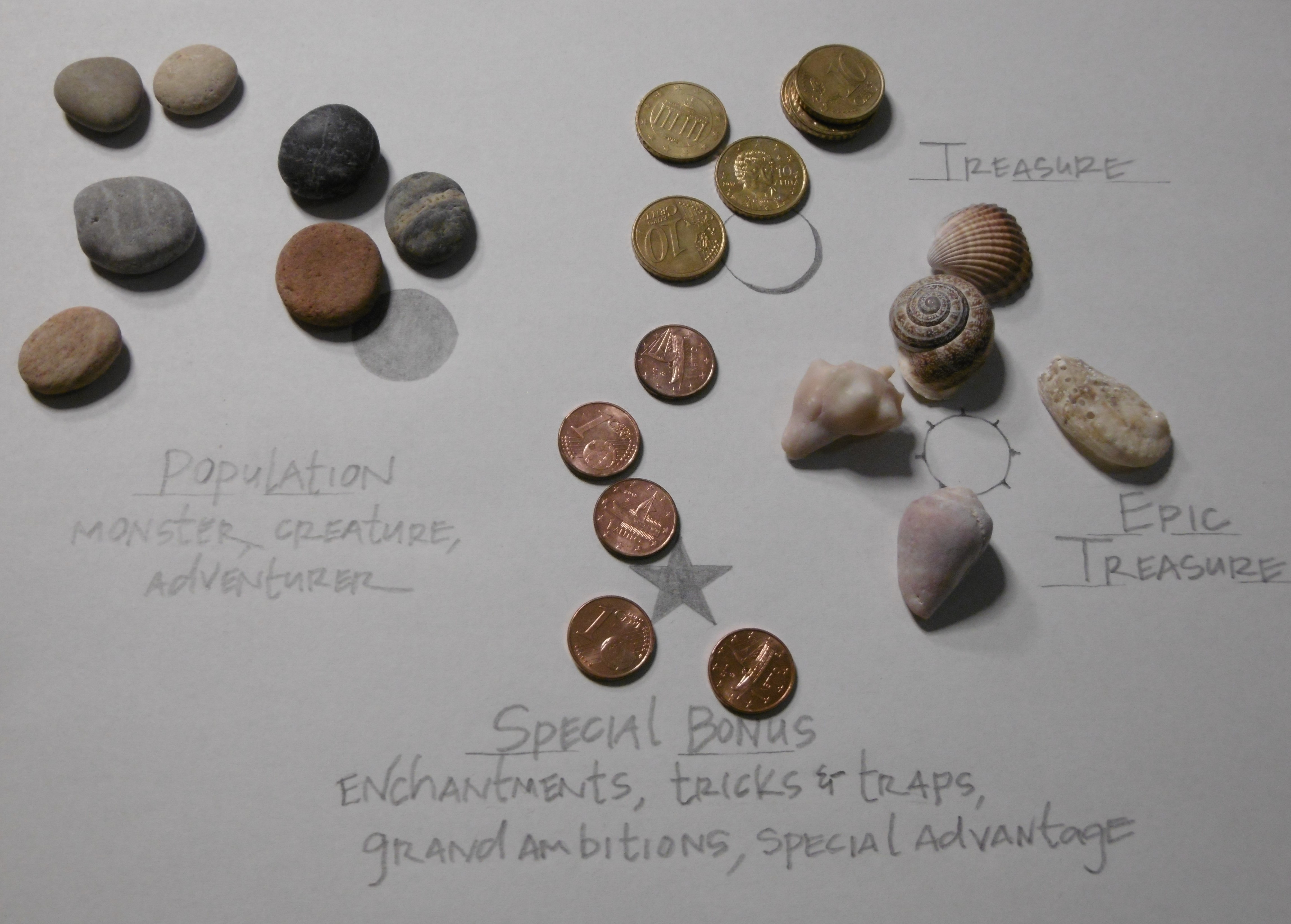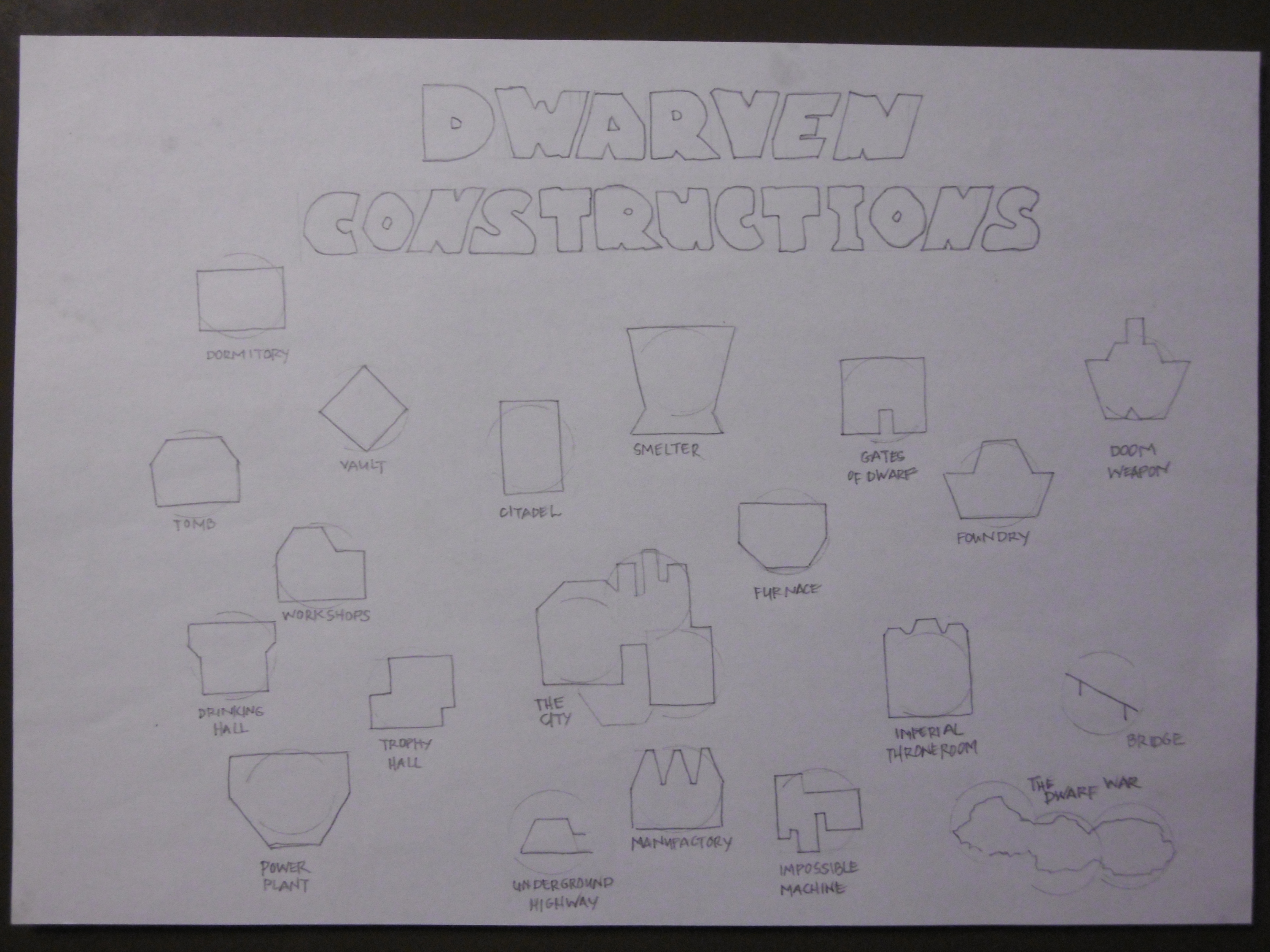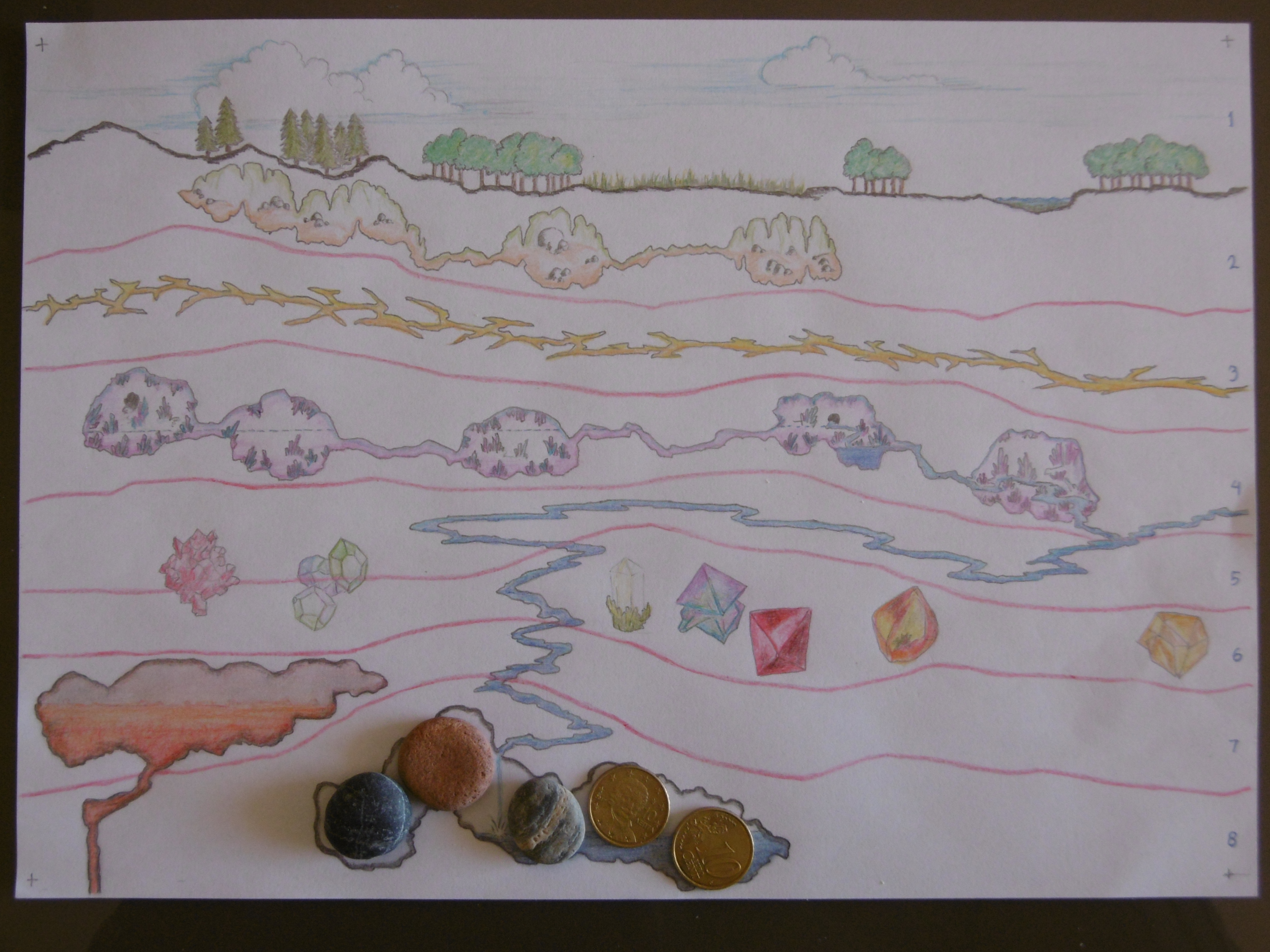The Wyrm Awakens
“They Delve too Deep. Draw a shaft off the bottom of the page.” (Dowler)
Dwarves who “delve too deep” is a fantasy staple—maybe a cliché. Whether it’s a balrog from the depths of the earth or an ambiguous nether-dwelling monster, in How to Host a Dungeon’s first edition (2008), the dwarves can hardly avert this end to their civilization. In the second edition, the too-deep delving can be avoided at a simple decision point, but the civilization’s end cannot.
I mentioned earlier that I want to use all the dwarven constructions, and there is still white space on the map. Through some rule-bending, I figured out how to do it. It will become clear later how that is achieved.
First, a fun diversion presents itself: The Throrgrmir dwarves have awakened the primordial wyrm. According to the rules, the civilization ends, and we move on to the Age of Monsters. But, in order to embellish the dungeon history for the subsequent campaign, I have the idea to simulate the battle between the dwarves and the wyrm with a B/X D&D encounter.1
Quick Math Using Mean Numbers
- Ten 12th-level dwarves (a dwarven lord to represent each population token) versus a 16th-level dragon (the wyrm).2
- Each dwarf has (4.5 x 9 + 9) 49 hit points and armor class 1 (platemail and shield with a +1 magic bonus).
- The wyrm has (16 x 4.5) 72 hp and AC -3.3
- In the first round of combat, the dwarves close for melee under the dragon’s breath weapon: Two dwarves (20%, they need a 4) fail the save vs. Dragon Breath and do not survive. Eight dwarves take half damage, 36 points, and are reduced to 13 hp.
- In the second round, the dwarves attack. Assuming +2 “to hit” and damage for strength and magic weapons, dwarves need a 13 to deal damage. Of eight dwarves, five (65%) hit for (4.5 + 2) 6.5 points of damage each, which is 32 points, reducing the dragon to 40 hp.
- The same round, the dragon wounds two more dwarves with its claws, and she bites another in half.
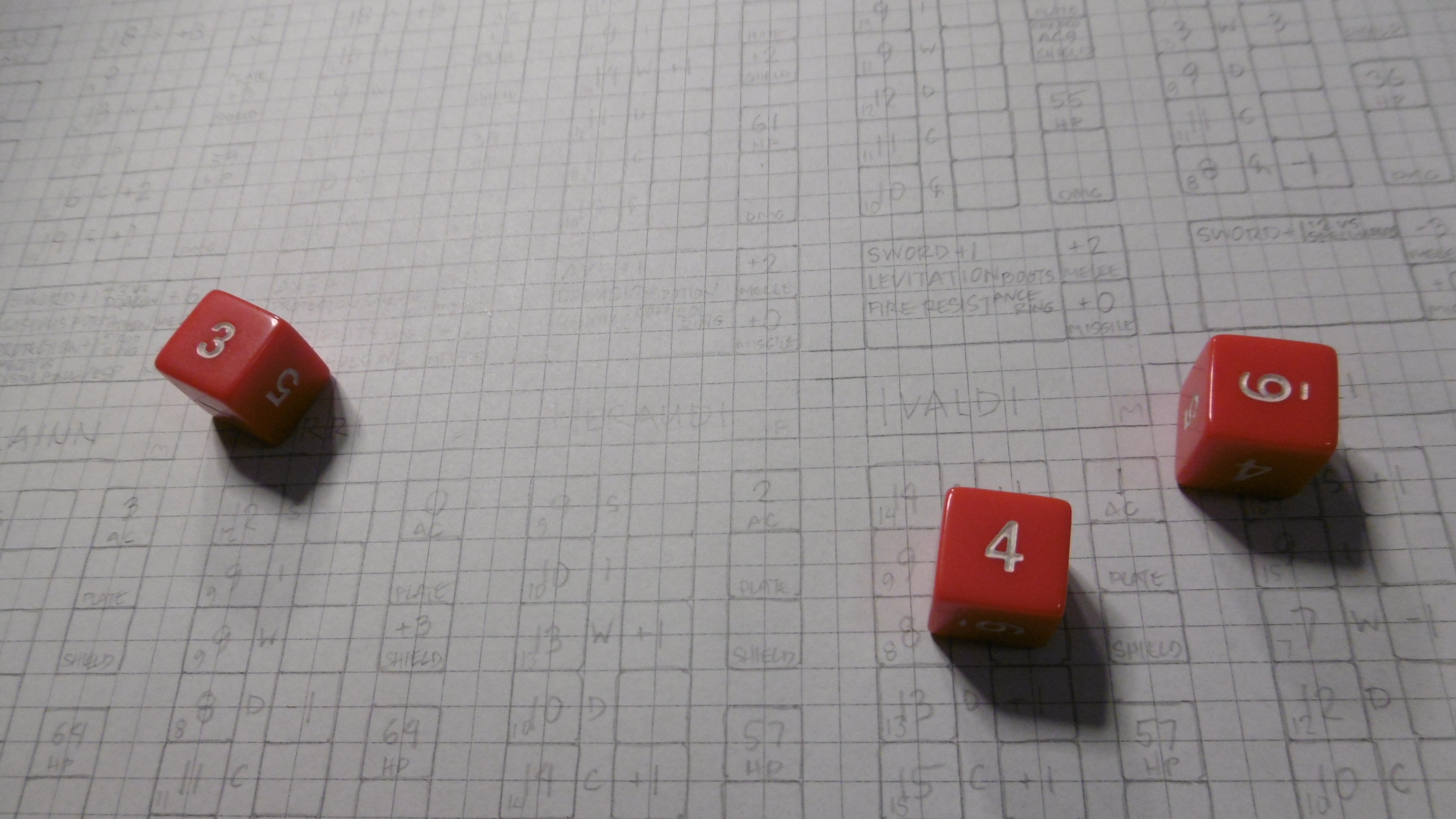
So, the third combat round opens with a 40-hit-point wyrm versus seven dwarves, who could still take a claw to the face and do a collective 30 points of damage.
The scenario doesn’t account for the vagaries of combat, but the odds are close enough. I’m rolling up some dwarven lords. Let’s go wyrm hunting!
Notes
1 My first thought was to run the scenario using the Chainmail miniatures rules (Gygax and Perren, Guidon Games, 1971). As fun as that might be, the combat would be overly complex for the present purpose. Plus, this is a fantastic opportunity to exercise the D&D Expert Rulebook.
2 See the DONJON LANDS Level Tiers table below. Being primordial, the wyrm is mythic. The dwarven lords, from the Age of Civilization, are epic.
3 I considered the possibility that the wyrm could cast spells. In the quick scenario outlined here, however, the dragon’s best first-round action is a 72-point breath weapon [not to mention, in B/X, a dragon always attacks with its breath weapon first (B34)], and after the dwarves close for melee, she couldn’t get off a spell.
DONJON LANDS Level Tiers
Tier Character Levels Period Historical Age Dungeon Age* Heroic 1-4 Medieval (Dark) Villainy Legendary 5-8 Ancient Iron Monsters Epic 9-12 Ancient Bronze Civilization Mythic 13-16 Prehistoric Stone Primordial *Ages from How to Host a Dungeon.
